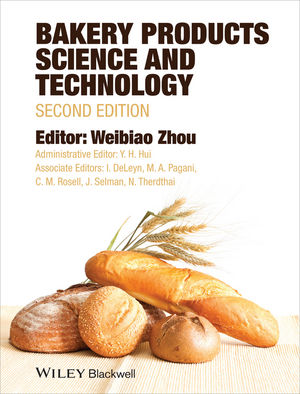Chocolate has a long history as a favorite treat and even as a guilty pleasure, but the ongoing research on the possible health benefits of cocoa is changing the way that manufacturers and consumers look at chocolate.
In fact, extensive nutritional research is helping the chocolate and confectionery industries better understand the possible health impact of compounds called polyphenolic flavonoids. These compounds, with known antioxidant properties, are found not only in cocoa but also in dark-colored fruits and some vegetables.
Importantly, fundamental research on the composition of cocoa is helping to identify hundreds of different components that may have potential health benefits ranging from improved cardiovascular health to memory enhancement to overall feelings of well-being.
Historically, the conventional processing methods for cocoa and chocolate have been detrimental to the preservation of many of these potentially healthful components.
However, considerable research by Barry Callebaut has identified processing techniques that preserve the natural goodness of the cocoa bean so that the resulting chocolate is not only flavorful but retains the potential health benefits of the bean itself.
While this research continues, there is also growing interest among consumers in dark chocolate with a higher cocoa content. While “darker” chocolate alone does not correlate to meaningfully higher levels of the beneficial polyphenolics – the special processing of the bean from harvest into chocolate is the key to preserving beneficial components – this trend does provide a clear opportunity for the industry to deliver higher levels of cocoa in broadly accepted products and to use cocoa that has been processed to preserve naturally occurring components.
Single-origin chocolates, which are chocolates made from cocoa beans from a specific region instead of using a blend of beans from different regions, is also a growing consumer trend.
These single-origin beans can further the development of healthy chocolates as producers learn about the potential for some growing regions to provide higher levels of beneficial compounds and deliver unique flavor profiles.
A look at prebiotics and probiotics
Beyond the concept of enhancing the healthful benefits of the cocoa itself, there are opportunities to modify chocolate through further changes of the other components of chocolate. The use of ingredients containing dietary fibers, such as inulin and other naturally occurring polysaccharides, is also adding another healthy dimension to chocolate. These prebiotic compounds can help: Promote digestive health by simu- lating the normally occurring beneficial bacteria in the colon; Reduce the sugar content of the chocolate; and Positively impact the glycemic index, which is of growing interest among consumers.Another area of future exploration involves the addition of probiotics, which are receiving widespread attention from consumers and the news media. [Editor’s note: Probiotics are “good” bacteria found naturally in the digestive system. Prebiotics (inulin) are a soluble dietary fiber that is not digested in the stomach or small intestine and reaches the large intestine intact. It is fermented in the lower parts of the intestinal tract by intestinal micro flora, which ensures a healthy digestive system.]
Probiotics are now commercially available in a stable form in the chocolate matrix and provide another opportunity to enhance the health outlook of chocolate. In fact, the evidence in support of the health benefits of probiotics is mounting.
It is now widely believed that by restoring the balance of the intestinal flora, certain orally ingested microorganisms have a positive effect on health and well-being. The challenge, until now, has been to ensure the survival and preserved functioning of these microorganisms in the digestive tract.
Recent research has shown that a specific combination of two probiotic strains not only overcomes the specific difficulties of embedding probiotics in cocoa and chocolate derivatives, but that under the right conditions, chocolate can, in fact, be an ideal carrier for the intestinal delivery of probiotics without effecting the taste, texture, or mouth feel of the chocolate.
Combining super fruits with chocolate
Adding “super fruits,” such as pomegranate, blueberries, bilberry and acai, which contain high levels of antioxidants, is yet another potential avenue for healthier chocolate.These fruits themselves are also the focus of extensive nutritional research and show many emerging health benefits. By adding them to a chocolate matrix, there are further enhancements to the antioxidant levels, and additional research may identify complementary or even synergistic benefits from these combinations.
The addition of concentrated or dry natural fruit powders to a white chocolate matrix is already commercially available and, due to the high concentrations of the dried fruits, provides chocolates with significant fruit levels on a fresh fruit basis.
Cutting calories in chocolate
Any discussion of the healthy outlook for chocolate must address the caloric density of chocolate as well as the levels of fat and sugar that are normally present in chocolate. There continues to be extensive research to reduce these “less healthy” aspects of this wonderful food.Ingredient research to reduce sugar and fat levels has shown promise, and chocolate processing breakthroughs are also complementing the ingredient developments. In fact, reductions of fat and sugar by more than 30% are possible today, and with strong consumer interest in further reductions, the research will continue by both ingredient suppliers and chocolate processors.
The future of chocolate looks very promising. In addition to the basic reasons of taste and indulgence for enjoying chocolate, ongoing nutritional research sparked by the emerging awareness of the natural goodness of the cocoa bean is identifying potential health benefits. Future research may even support the wisdom of the decision to name the cacao plant Theobroma Cacao or “food of the gods.”






